Rome’s Hidden Cruelties: Disturbing facts about the Roman Empire (Part 1)
Behind Rome’s triumphal arches and marble forums lay a society built on domination. From infanticide and slavery to crucifixion and medical exploitation, cruelty was not an aberration—it was structure. This is the side of the empire history rarely glorifies.
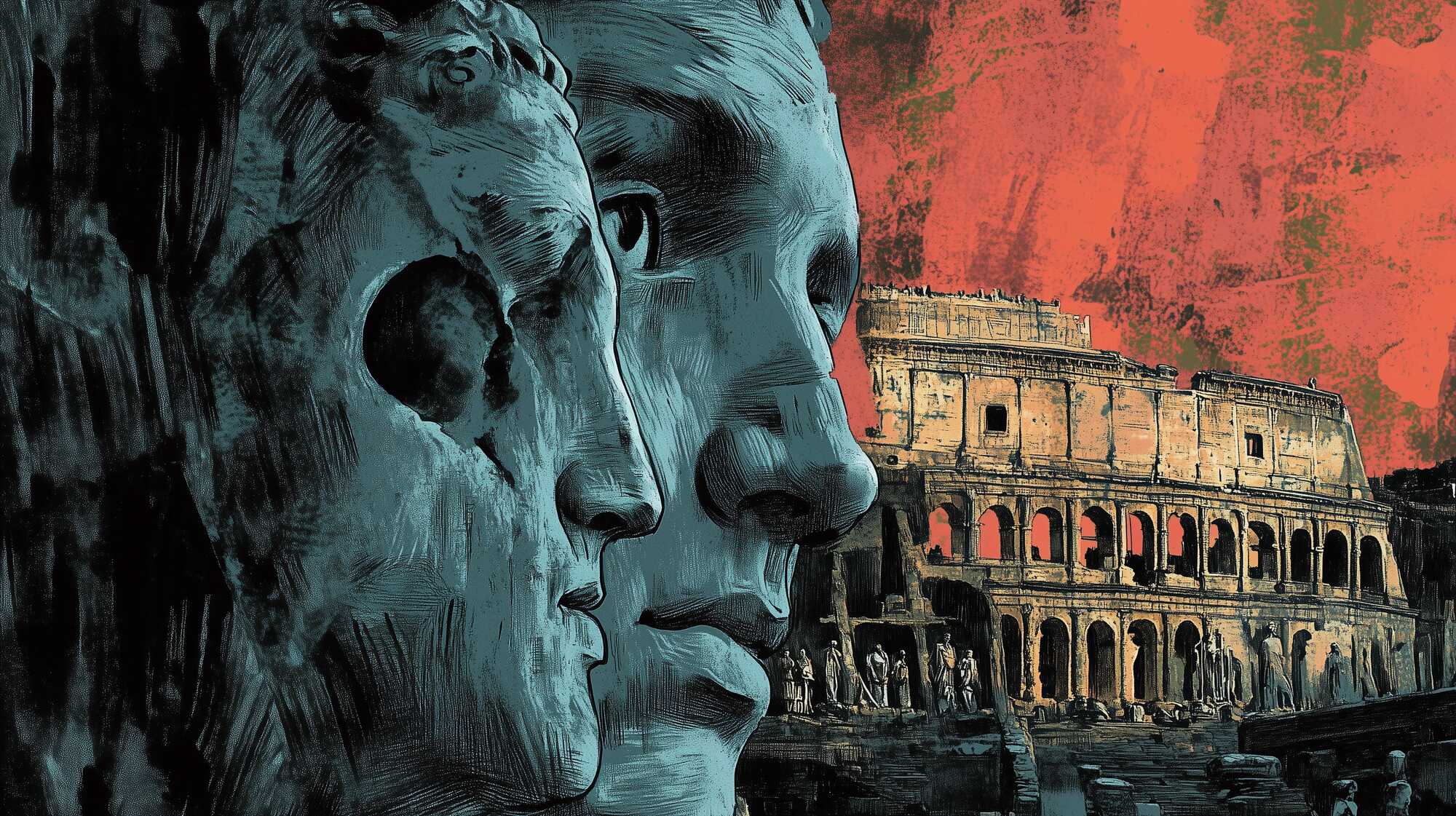
Marble temples, paved roads, and military brilliance—the Roman Empire is often remembered for its grandeur and legacy. But behind the statues and triumphal arches lies a world far more brutal than many imagine.
Beneath its polished veneer, Rome was a society built on domination, where power was etched in blood, and cruelty was a daily instrument of control. From infanticide and public torture, to a legal system that normalized slavery and rape, the empire’s foundations were as dark as they were enduring.
Unwanted from Birth: The Normalization of Infant Abandonment in Rome
In Roman society, decisions about a newborn’s fate rested entirely with the family, most often with the father. Contrary to later romanticized interpretations, there was no formal ceremony in which a child was lifted to be symbolically accepted into the household. The term tollere liberum, sometimes misrepresented as such a ritual, simply meant “to raise a child,” and it had no legal or ceremonial force.
Exposure of infants was practiced in cases of illegitimacy, visible disability, or when the family determined it could not or would not support the child. Literary sources, including Livy’s telling of the Romulus and Remus myth, reflect how familiar this act was in Roman thought.
The philosopher Seneca, writing in the first century CE, refers to this practice with dispassionate clarity:
“We destroy monstrous births; and we also drown children at birth if they are weak or abnormal.
It is not anger, but reason, to separate the useless from the healthy.”
Seneca, De Ira 1.15.2
The Twelve Tables do not mention exposure, nor do they offer protection against it. While it is often claimed that the Roman father had a legal right to kill or expose his children, the idea of ius vitae necisque—the right of life and death—was rooted more in rhetorical and moral tradition than in actual law.
Stories of fathers executing sons, such as that of Titus Manlius Torquatus, were recorded by historians like Livy as moral exempla rather than evidence of legal precedent. Even in the Republic, such extreme acts were subject to scrutiny, and by Late Antiquity, laws such as Constantine’s edict of 318 CE classified the killing of one’s child as a form of parricide. Still, the cultural image of paternal supremacy endured.
There is also no archaeological or literary evidence of any state-sanctioned ritual for accepting or rejecting infants. The decision to rear or abandon a child left no formal trace—it was a private act carried out in silence.
Although later Christian and legal texts sometimes portrayed fathers as having extensive powers over life and death, this representation reflects cultural ideology more than legal fact. The Roman legal system itself shifted over time, but the stories of control and authority remained, sustained by a tradition that prized discipline, hierarchy, and the supremacy of the household head. (Raising and Killing Children: The Roman Way, by Brent D. Shaw)

Slavery as a Foundation of Daily Life
Slavery was not a side effect of Roman prosperity—it was its structure. The empire was home to millions of enslaved people, many of whom were born into servitude or captured during Rome’s relentless military campaigns.
In cities like Rome and Ostia, slaves formed up to one-third of the population. They worked in markets, kitchens, workshops, and public buildings, making Roman daily life function at every level. (Slavery in the Roman World, by Sandra R. Joshel)
The Roman household (familia) was not a private refuge—it was a system of control, centered on the master’s authority over enslaved people. Slaves had no legal personhood.
They could not legally marry, testify in court without torture, or own property. Roman jurists classified them as instrumenta vocalia—“talking tools”—with no more autonomy than carts or ploughs.
Enslaved individuals were branded, whipped, sold, and forced into sexual labor without legal consequence for their owners. This level of dehumanization was not questioned by the legal system—it was built into it.
(Slavery and Society at Rome, by Keith Bradley)
The public infrastructure of Rome also relied heavily on enslaved labor. The state maintained an entire category of “public slaves” who cleaned streets, repaired aqueducts, built roads, and served in temples and archives.

Even highly specialized and literate slaves—doctors, scribes, teachers—remained legally property.
A possible representation of an Ancient Greek paedagogus or ludi magister, a Roman slave tasked with teaching young Romans arithmetic, reading and writing. Credits: Roman Empire TImes, Midjourney
The paradox of literacy without liberty, education without rights, was normalized. Some slaves did attain freedom through manumission, but even freedmen remained socially marked by their former status and often continued to work for their ex-masters. (Slavery in the Late Roman World, AD 275–425, by Kyle Harper)
What made Roman slavery particularly disturbing was not just its brutality, but its banality. It was deeply embedded in economic production, household life, and political symbolism.
The enslaved were expected to be invisible, obedient, and silent—yet everywhere in the Roman world, their labor made Roman culture visible and powerful. This invisibility of oppression, despite its omnipresence, is what defines Roman slavery not only as a historical fact, but as a disturbing foundation of ancient civilization.
Crucifixion and Public Executions: Terror, Torture, and Display
Crucifixion was not solely an execution method—it was a carefully crafted spectacle of prolonged suffering, combining punishment, torture, and public humiliation. Although largely historical, it has not entirely disappeared: the process still retains its legal status in modern Iran and there are reports of its use against women from the Karen ethnic minority in Burma.
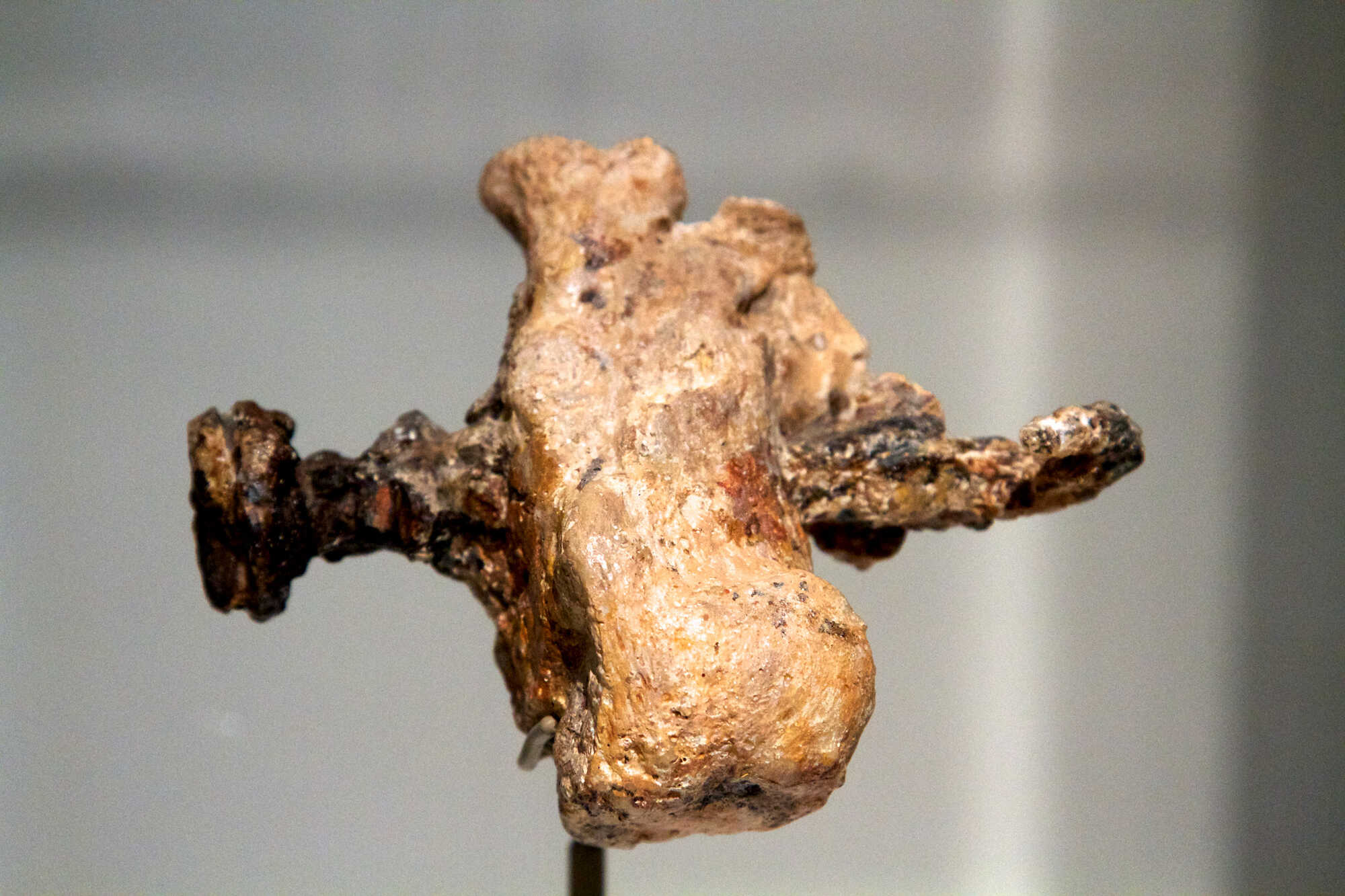
Unlike most known execution methods, which aim to end life swiftly, crucifixion stood out for its deliberate slowness.
A pierced heel bone by an iron nail, indicating that the victim‘s feet were nailed to the side of the cross, from the Museum of Israel, Jerusalem. Credits: Nick Thomson, CC BY-SA-NC 2.0
From the medieval period onward, public executions in many societies were designed to project authority and shame the condemned, yet they typically relied on methods such as hanging, beheading, burning, stoning, drowning, or, in modern times, electrocution and lethal injection—all of which, while violent, generally resulted in a quick death.
These techniques were rarely intended to extend suffering. In contrast, torture today is more often associated with the extraction of information rather than the imposition of death.
Crucifixion, however, straddled both categories. Though its end was death, the process itself was prolonged—sometimes taking hours, but in many cases stretching over days. In this way, crucifixion functioned not only as execution but as sustained torment, making it exceptional in the history of capital punishment.
The suffering inflicted was deliberate and prolonged. Victims might endure hours or even days of agony—hanging exposed, pierced with nails or bound with rope, dehydrated, and left to be mocked by crowds. Roman writers describe flogging with metal-laced whips, forced marches carrying the crossbeam, and the humiliation of nakedness. Seneca, describing such executions, wrote:
“I see crosses there... not for a brief hour, but so contrived that the victim may die enduring long drawn-out agony.”
To Marcia, On Consolation (Dialogues, 20.3), Seneca the Younger
This was not only execution—it was torture. The process, referred to in Roman texts as addita ludibria (“additional mockeries”), was designed to degrade both body and soul. The condemned often died of asphyxiation, organ failure, blood loss, or even infection from open wounds exposed for days to heat and insects.
Burial was usually denied. The body was left to rot on the cross, be devoured by animals, or thrown into mass graves. This post-mortem humiliation further erased the personhood of the victim. Modern medical studies have attempted to reconstruct the physical ordeal of crucifixion—not to dramatize, but to understand the mechanisms of death in what was a deliberately drawn-out process.
We should be cautions against viewing crucifixion through the narrow lens of the New Testament narrative, and remind ourselves that methods varied across regions and periods. Still, by analyzing the physiological effects, scholars have outlined a grim profile of what victims likely endured.
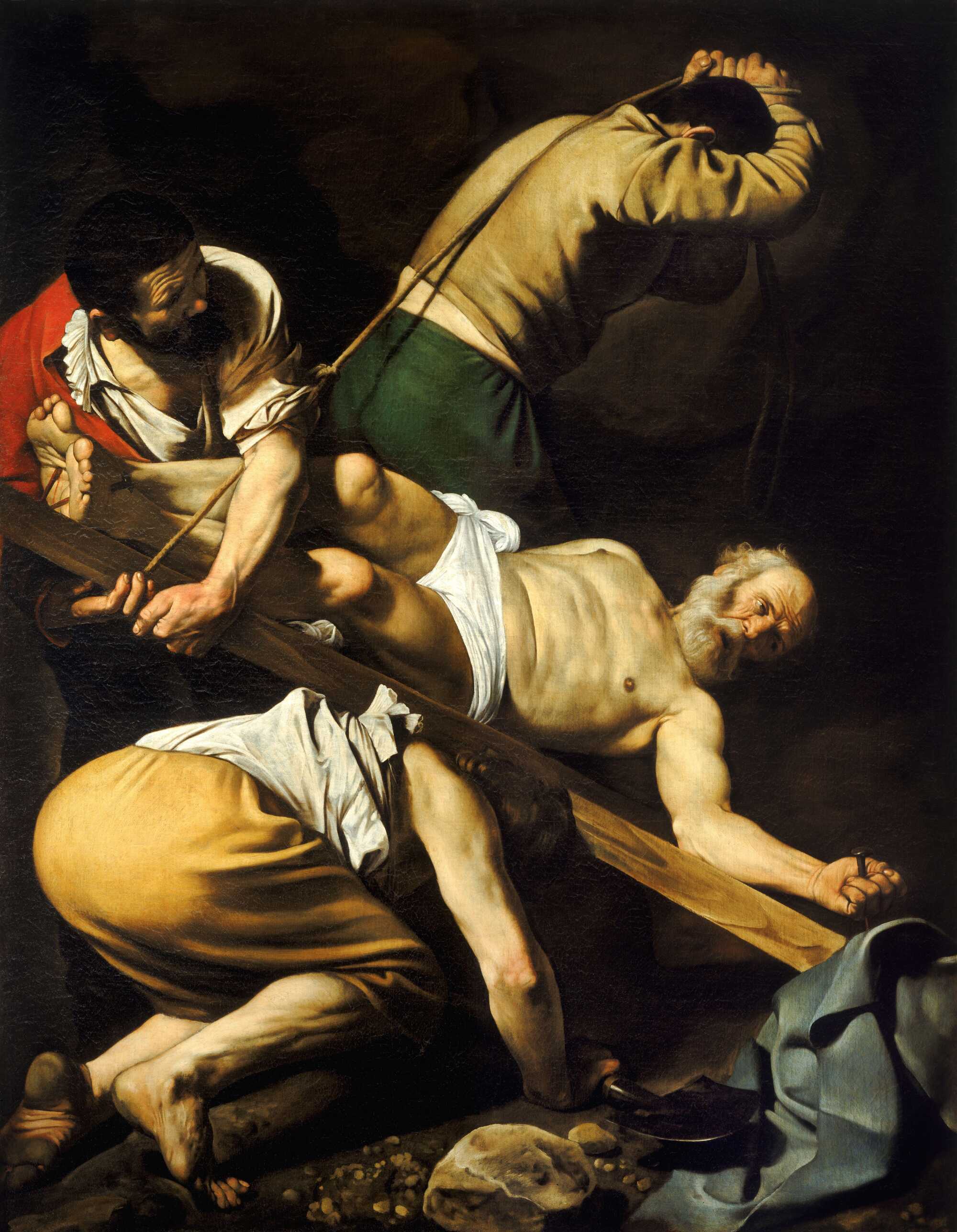
The crucified person would suffer intense trauma from the outset, possibly triggering cardiac arrest. Dehydration over multiple days would induce confusion, hallucinations, and heatstroke. Pain from the nailing—especially if the median nerve in the wrist was struck—would be excruciating and unrelenting. The scourged back rubbing against a coarse wooden surface would reopen wounds and intensify blood loss.
Muscle cramps in the arms, shoulders, and legs were constant, and movement to relieve them was virtually impossible. Some victims remained alive long enough for maggots to form in open wounds while flies swarmed around them.
Incontinence added further degradation. As the body failed, organs shut down one by one. Some researchers cite multi-organ collapse as the primary cause of death, while others emphasize asphyxiation—caused by the slow weakening of respiratory muscles. The raised position of the arms, while allowing blood to circulate and delaying death, also amplified pain with every breath. (Dishonour, Degradation and Display: Crucifixion in the Roman World, by Philip John Hughes)
What mattered most was who was eligible. Roman citizens were protected from crucifixion, except in extreme cases of treason. For most others—especially slaves and foreigners—it was the default punishment for serious crimes, real or alleged. After the revolt led by Spartacus in 71 BCE, 6,000 enslaved men were crucified along the Appian Way in a display of state power that stretched from Rome to Capua. (Slavery in the Late Roman World, AD 275–425, by Kyle Harper)
Crucifixion functioned as a public affirmation of the social hierarchy. As Cicero put it:
“To bind a Roman citizen is a crime; to flog him is an abomination; to execute him is almost murder; to crucify him—there is no fitting word.”
Against Verres, Cicero
The true horror for Cicero was not the cruelty of the act itself but that it might be applied to a citizen. The punishment was thus a declaration of status, subjugation, and exclusion—a spectacle in which dignity was stripped alongside life.
The staging of these executions was deliberate. Crucifixions often occurred near marketplaces, amphitheaters, or along travel routes to maximize audience impact. The Campus Esquilinus in Rome, just outside the city gates, became a known site for such deaths—its landscape reshaped over centuries by the memory of these performances.
Crucifixion turned spaces into zones of social memory, where terror, dishonour, and imperial control became imprinted on the geography itself.
Human Experimentation in Medicine: The Alexandrian Threshold
In the third century BCE, Alexandria was a city of bold ideas. Founded by Alexander the Great as a beacon of Greek culture and scientific inquiry, it attracted scholars, physicians, and philosophers from across the fractured Hellenistic world.
Among them were the pioneering anatomists Herophilus and Erasistratus, who, under the patronage of the Ptolemaic kings, were reportedly granted permission to dissect and vivisect living human beings—specifically, condemned criminals. These acts, conducted not to heal but to observe, stirred moral and philosophical debate that still echoes today.
Controversy over these procedures was reflected centuries later in the writings of the Roman medical historian Celsus, who preserved the arguments of rival medical schools. The empiricists, grounded in Hippocratic tradition, rejected all forms of dissection, arguing that it yielded only pathological distortions and violated the physician's role as healer. For them, observation during treatment was sufficient.
“It is not cruel to use the bodies of criminals, who by their actions have forfeited their lives, for the benefit of the living.”
Celsus, De Medicina, Proemium (Preface), sections 26–27
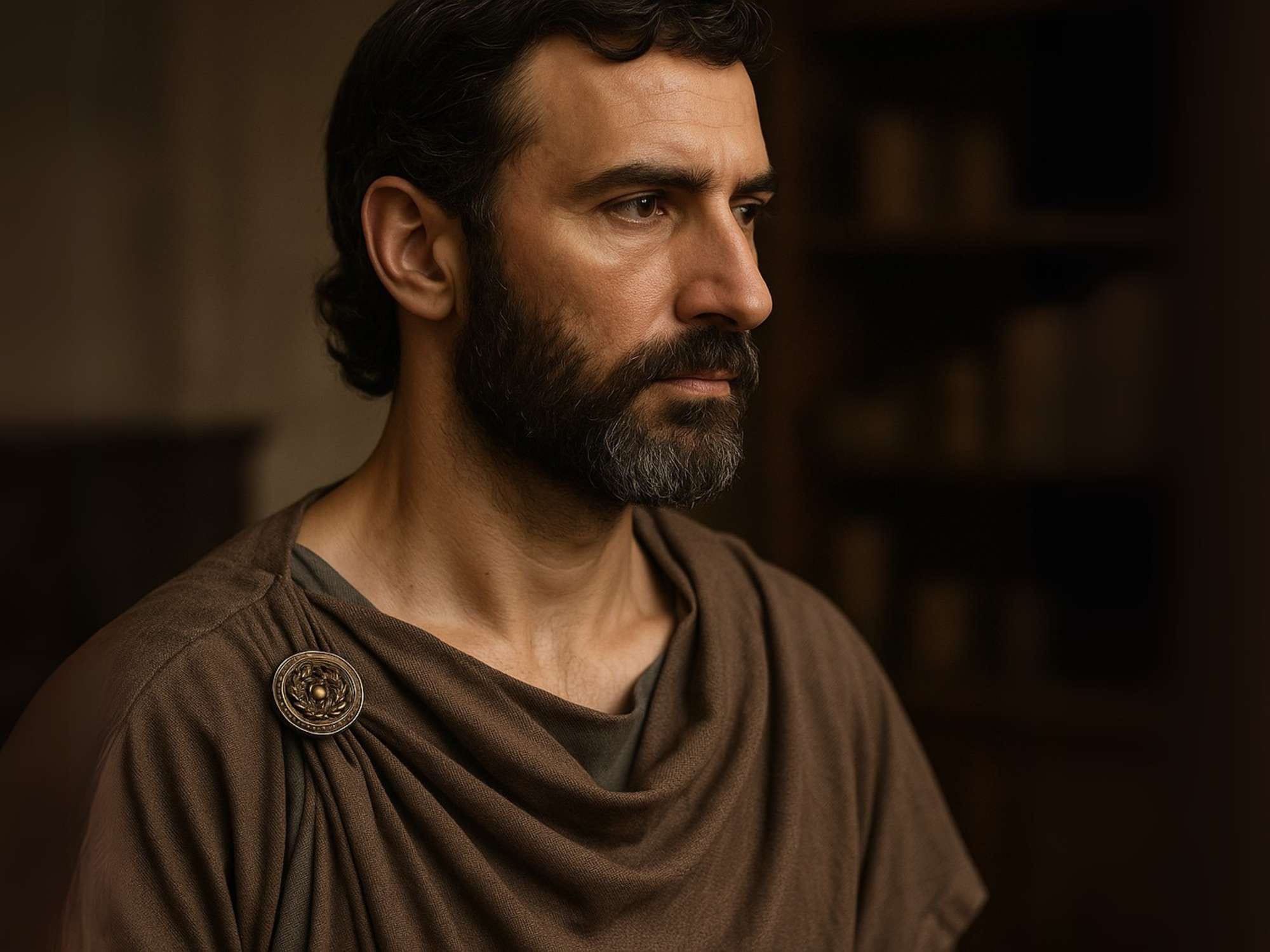
By contrast, the dogmatists, to whom Herophilus and Erasistratus belonged, believed that knowledge of internal structures was essential—and could only be achieved through dissection of the dead and, at times, the living. Their position echoed Aristotle’s belief that nature should be studied as it exists, even when that meant crossing long-held taboos.
While Greek and Egyptian traditions normally forbade the cutting of human bodies—whether for medical or punitive reasons—the intellectual climate of Alexandria briefly allowed these taboos to be set aside. Embalming practices and philosophical arguments provided a cultural framework that made human dissection, and even vivisection, temporarily possible.
Herophilus, for instance, made crucial discoveries about the nervous system, identifying the brain—not the heart, as Aristotle had thought—as the center of thought and sensation. He was the first to distinguish sensory and motor nerves, and he described the retina and optic nerve in detail. His anatomical terminology survives in modern medicine.
Erasistratus contributed significantly to the understanding of the vascular system, studying the heart’s valves and comparing its function to a pump. He conducted live experiments on animals and proposed a theory in which arteries carried air, a misunderstanding rooted in observations of dead bodies.
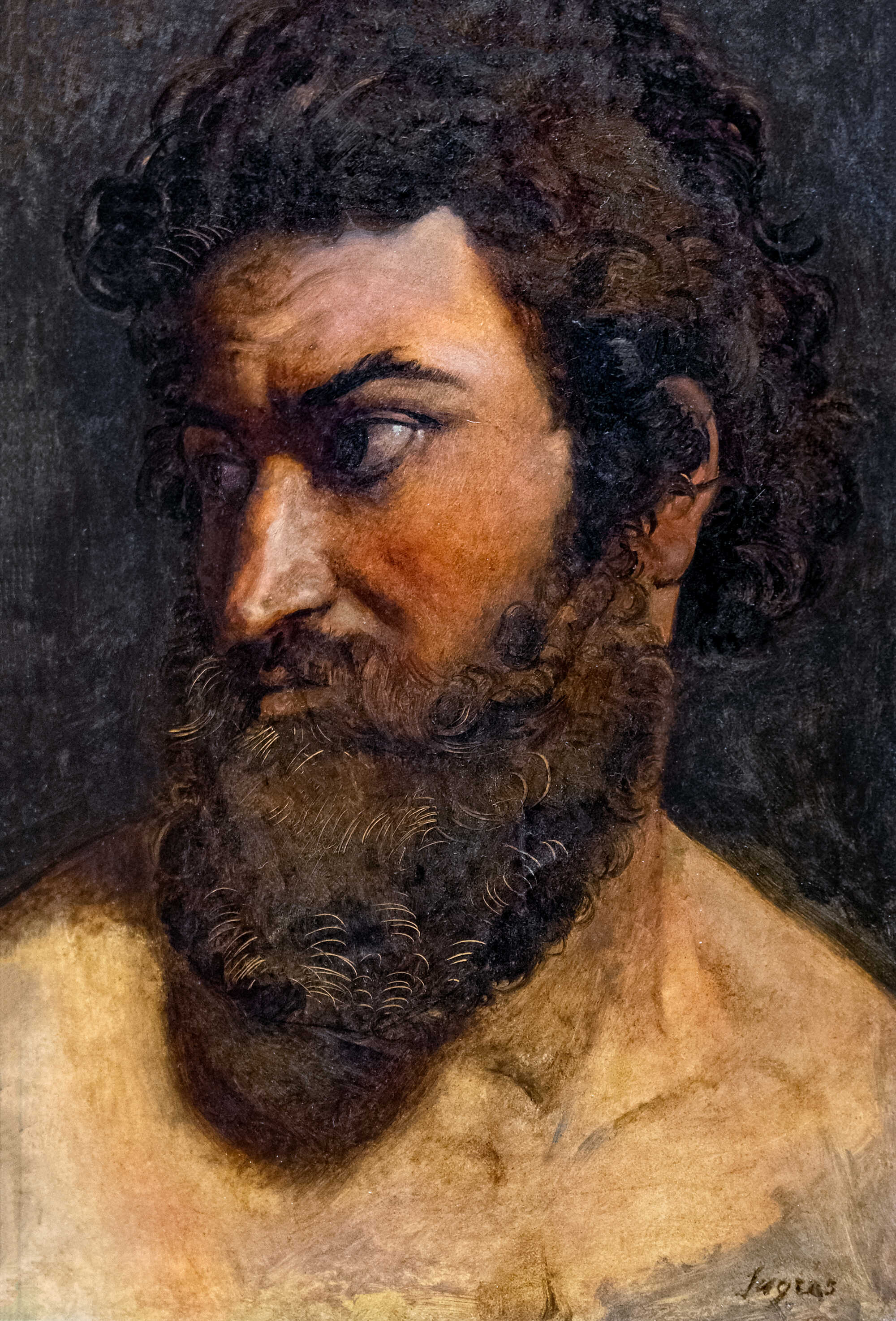
Despite this error, his work on circulation laid the groundwork for discoveries not confirmed until the seventeenth century.
Bust of Erasistratus, a painting by Jean-Auguste-Dominique Ingres. Credits: Didier Descouens, CC BY-SA 4.0
Though these experiments represent a high point in ancient anatomical study, their methods drew fierce opposition, even in antiquity. Critics accused Herophilus and Erasistratus of crossing ethical boundaries, and later Christian authors cited their practices as evidence of pagan cruelty.
Still, at the time, the lives of slaves, criminals, and prisoners were considered expendable. Torture was legal and common in Roman courts, and dissection of condemned bodies was seen as a logical extension of that logic. The concept of pain, or of suffering as morally significant, had not yet taken root as it would in later periods.
The scientific boldness of Alexandria did not last. Changing political climates and reasserted cultural taboos brought an end to human vivisection. But the knowledge gained lived on—in the texts, techniques, and ambitions of later physicians, especially one who looked back on the Alexandrians with a mixture of envy and admiration: Galen of Pergamum.
Galen: Anatomy by Any Means
Galen of Pergamum, the most influential physician of the Roman Empire, conducted his research in a world where anatomy was not just science—it was performance. Public dissections were attended by crowds, and reputations were built through anatomical displays. Galen himself once dissected an elephant to prove a rival wrong, and a live animal experiment in which he tied off an artery and cut between the ligatures—releasing blood, not air—earned applause from onlookers and established his authority.
His early training took place in Pergamum’s gladiator school, where he treated severe wounds. This experience allowed him to observe internal structures in real clinical conditions, echoing the empiricist approach of learning through observation.
However, Galen did not align with the empirics. He was an advocate of the dogmatist school, arguing that a physician must not only treat but understand—through direct observation—the purpose of each body part.
He studied in Alexandria, where he reportedly saw a complete human skeleton, though by his time dissection of human cadavers was no longer permitted. Human dissection was banned in Rome, so Galen relied on animal dissection and vivisection, especially of Barbary apes, pigs, and goats.
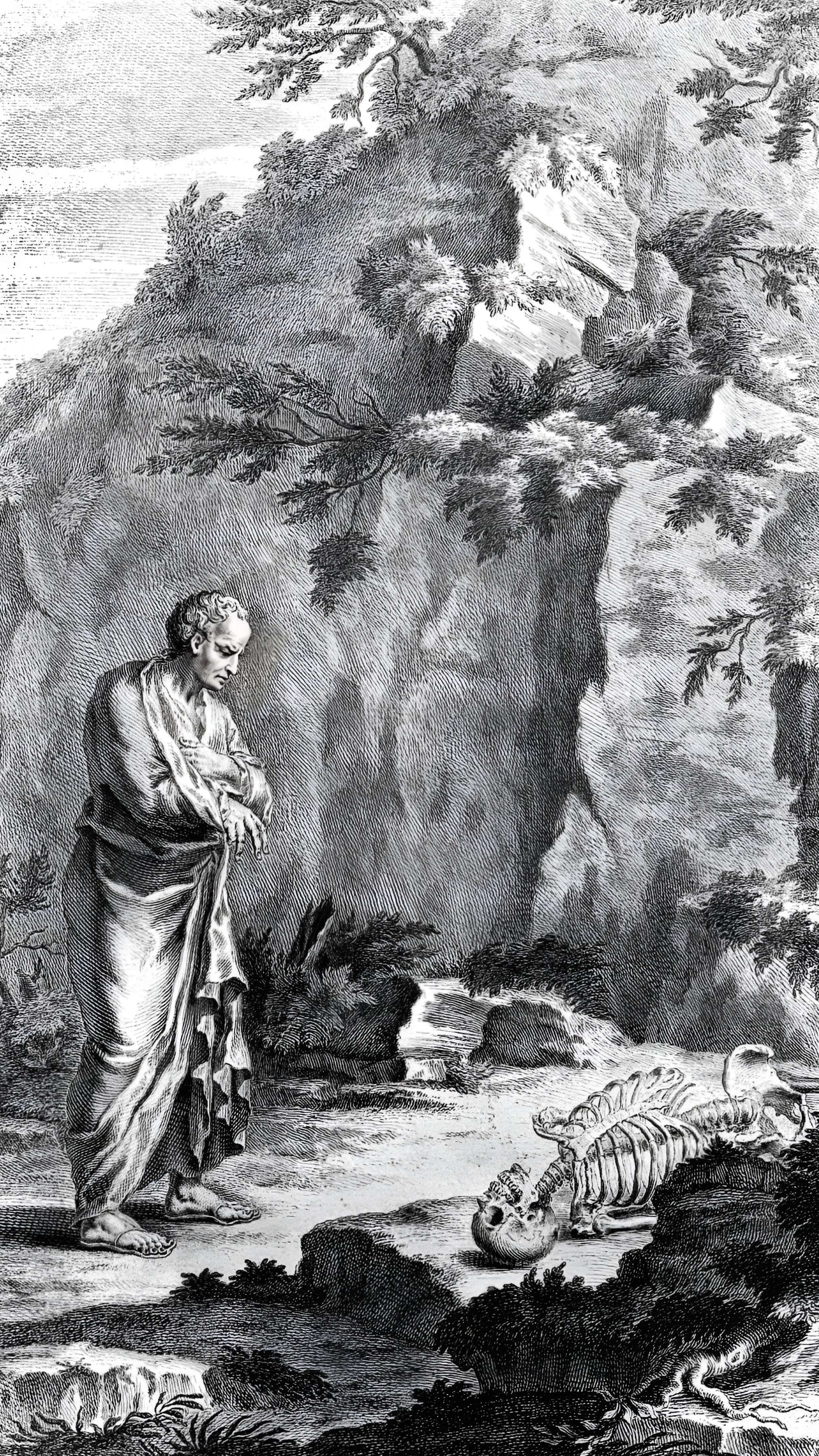
His manual On Anatomical Procedures, delivered as a lecture in 177 CE, and On the Usefulness of the Parts of the Body, written around 175 CE, remain landmarks in anatomical writing. Galen believed that all living things had physis (life) and psyche (consciousness), but only humans possessed reason. Inspired by Aristotle’s teleological worldview, Galen held that every part of the body had a purpose.
Anatomy was not only about healing—it was about understanding the order of nature. While Galen declared early in his writing that the goal of anatomy was to better treat wounds, his passion for knowledge often took precedence. He dissected animals to trace nerves, muscles, and vessels, and performed live experiments to observe organ function.
He documented in clinical detail how cutting different nerves would mute an animal’s voice, or how removing parts of the brain affected its movement. In one experiment, he described how cutting into the chest of a live animal could silence its cries—until the wound was covered again.
The animal's suffering was part of the procedure. Galen famously instructed his students:
“Cut without pity or compassion...
The cries of the animal are part of the procedure.”
Galen, On Anatomical Procedures (De Anatomicis Administrationibus), Book I
Despite never dissecting a human, Galen's detailed anatomical work—extrapolated from animals and informed by Alexandrian knowledge—was taken as authoritative for centuries. He viewed animals as inferior beings with diminished awareness of pain. When a slave lost part of his sternum and lived, Galen reasoned, a non-rational animal could surely survive worse.
His attitude toward animals was pragmatic; they were tools in the search for truth. Galen's work helped form the basis for Western biological research, both in method and in attitude. His dispassionate style and vivid descriptions still challenge modern readers.

He was the last great anatomist of antiquity, and after his time, experimentation of this kind vanished from the West for a thousand years.
A possible representation of Galen, the famous Roman physician, based on historical sources. Credits: Roman Empire Times, OpenAI
That his methods endured—through Christian and Islamic translations—speaks to the power of his system. In Galen’s Rome, where bodies were sites of performance, discipline, and control, the physician’s knife followed the same logic. (Experimenting with humans and animals: from Galen to animal rights, by Anita Guerrini)
So, while the most explicit cases of live human dissection occurred in Hellenistic Alexandria, the Roman Empire was by no means exempt from exploitative medical practices. In Rome, human dissection was legally prohibited, but that did not mean vulnerable bodies were protected. Enslaved people, gladiators, prisoners, and the poor were routinely used for invasive procedures, surgical training, and observational medicine—all without consent or recourse.
As aforementioned, Galen, the most renowned physician of the empire, gained much of his anatomical expertise by treating severely wounded slaves and gladiators in a combat arena. Meanwhile, Roman doctors continued to rely on discoveries made in Alexandria, fully embracing knowledge acquired through vivisection.
Pain relief was rarely offered. Legal protections did not apply. These practices were accepted as normal, even necessary. In Rome, the boundary between healing and harm depended entirely on status.

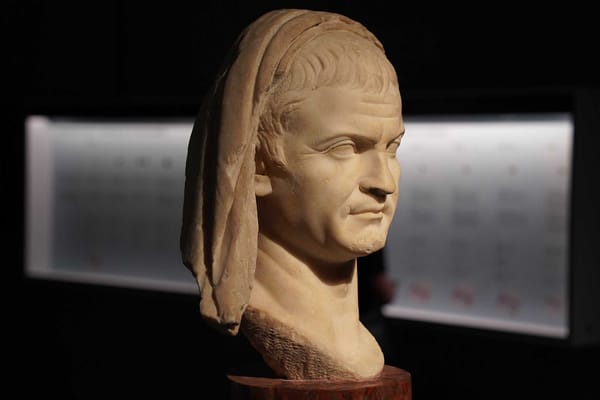



About the Roman Empire Times
See all the latest news for the Roman Empire, ancient Roman historical facts, anecdotes from Roman Times and stories from the Empire at romanempiretimes.com. Contact our newsroom to report an update or send your story, photos and videos. Follow RET on Google News, Flipboard and subscribe here to our daily email.
Follow the Roman Empire Times on social media: